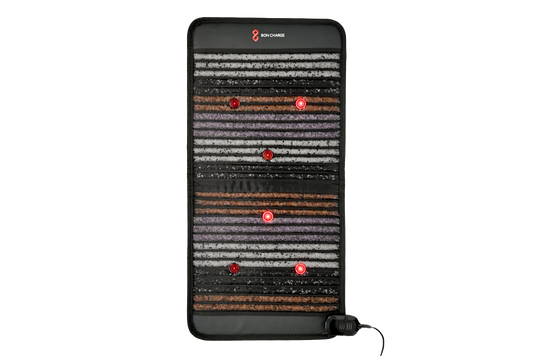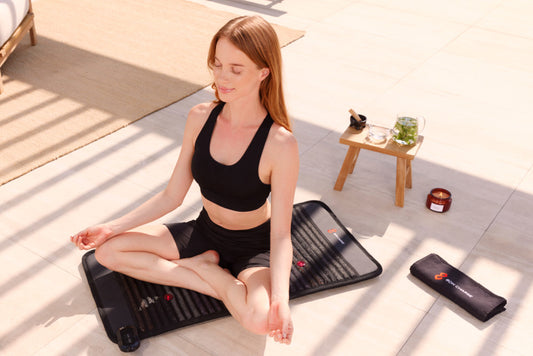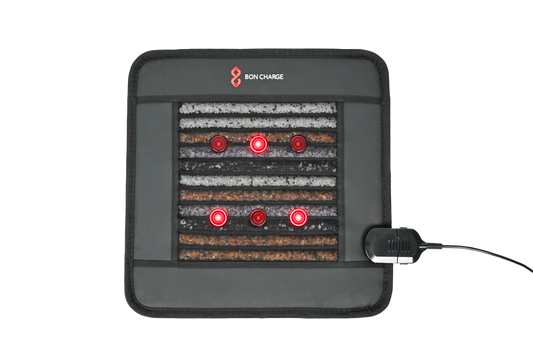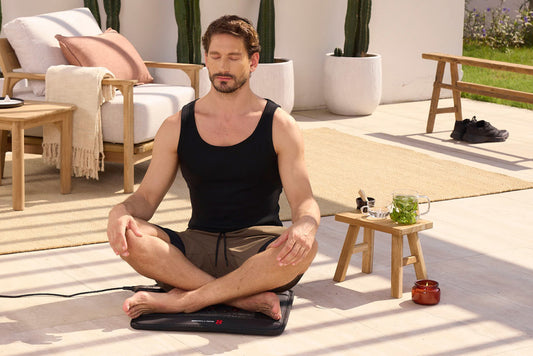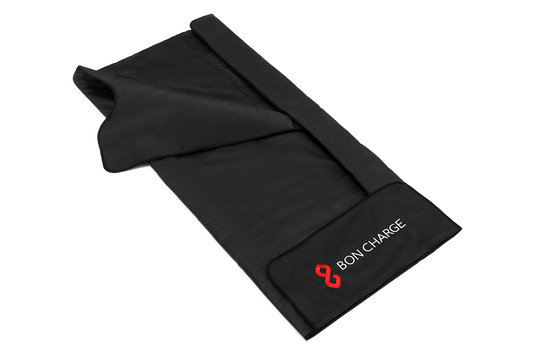Reclaim Your Wellness: How To Recover From Setbacks
Mark Pearce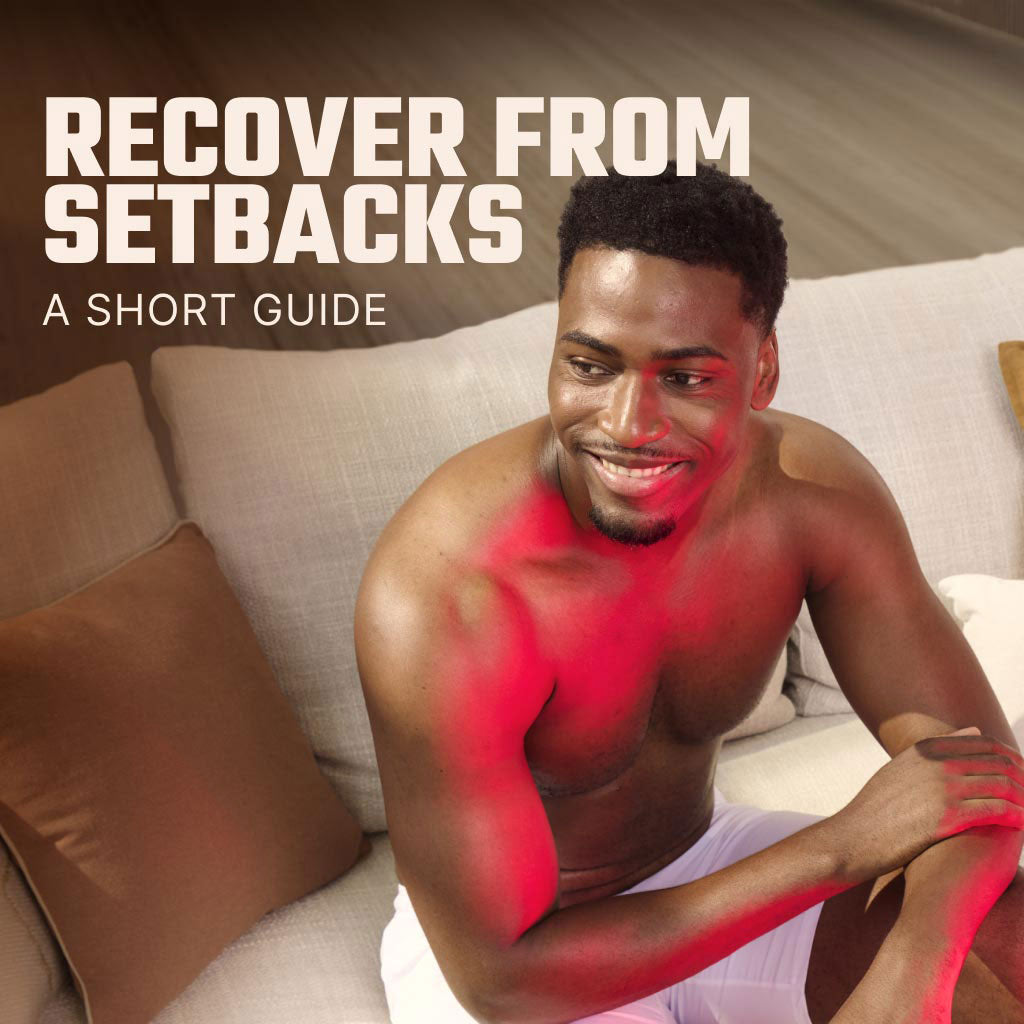
Life has its ups and downs, and wellness setbacks are an inevitable part of the journey.
Injuries and everyday stresses can take a toll on our bodies and minds, making the path to recovery challenging.
When we're recovering, we often experience a range of physical and emotional responses. Stiffness, discomfort and weakness. Frustration, impatience, even isolation.
This short guide will help you navigate the psychological effects of a setback. It will address the frustrations of recovery, and it will provide practical tips and routines to get you back on your feet faster.
Understanding the Emotional Impact
Let's address the emotional aspects of recovery first. Why? Because it's normal to experience negative thoughts after a setback. We need to replace them with positive thoughts.
1. Recognize Your Emotions
The first step to recovery is recognizing the emotional toll a setback can take. It's natural to feel frustrated, anxious, or down when your body isn’t performing.
Allow yourself to experience these emotions without judgment. This is crucial because it sets the foundation for a positive mindset moving forward.
It’s perfectly OK to feel vulnerable. The sooner you accept this, the sooner you’re back on your road to recovery.
Know that you’re not alone. Everybody faces wellness setbacks. Everybody bounces back at some point.
Key: At some point = At a pace that’s right for you. Don’t rush things.
2. Maintain a Positive Outlook
While it's essential to acknowledge negative emotions, maintaining a positive outlook can enhance your recovery.
Studies show that optimism can improve physical wellness outcomes. Try to focus on small, incremental goals (see below). Each goal you reach is a victory. A move in the right direction.
If you find your positivity slipping, remember setbacks are only temporary. Refocus on your goals. Some people recommend writing a gratitude journal to practice positive thinking.
3. Reach Out
Never hesitate to reach out to friends, family, or a professional therapist.
Sharing your feelings with others can ease emotional stress and provide you with the encouragement you need. It's important to stay positive during your recovery journey.
Those you reach out to can help you feel hopeful and motivated by your progress and milestones in your recovery process.
Tackling the Frustration
There's no golden rule to tackling the frustration that comes with setbacks and recovery. The following will offer you a good head start:
1. Set Realistic Goals
Recovery takes time, and setting realistic stage-by-stage goals can help you stay motivated. Your main goal should be avoiding further stress and injury. Keep one foot in front of the other. Don’t overdo it.
Break down your recovery process into smaller steps and celebrate each achievement, no matter how small.
2. Stay Informed
Understanding your condition and the recovery process can reduce frustration. Consult wellness professionals, read up on your specific setback, and educate yourself on the best recovery practices.
Wellness technology can play a significant part in your recovery. Increasingly popular tech like PEMF Mats, red light therapy, and infrared sauna blankets have widely known wellness properties.
You can read more about those below.
3. Be Patient
Patience is crucial during recovery. Progress may be slow. It's likely there'll be setbacks along the way.
Accepting this and giving your body the time it needs to heal can reduce much of the frustration.
Helpful Tips for Faster Recovery
We all want to recover faster so we can get back on our feet.
Remember: Recovery isn't a race but you can recover faster by embracing these tips.
1. Rest and Hydration
Rest and sleep are important for recovery. Ensure you get adequate sleep and take breaks when you need to. Additionally, staying hydrated helps your body repair itself more efficiently.
2. Balanced Nutrition
Eating a balanced diet rich in vitamins and minerals supports the healing process. Incorporate plenty of fruits, vegetables, lean proteins, and whole foods into your diet.
The better you eat, the faster you’ll recover.
3. Gentle Exercise
Depending on your setback, gentle exercises like stretching, yoga, or light walking can boost circulation and aid in recovery.
Always consult your doctor or a wellness professional before starting any exercise.
4. Mindfulness and Meditation
Practicing mindfulness and meditation can reduce stress and promote mental well-being. These practices help you stay present and positive, supporting your recovery.
Wellness Technology For Faster Recovery
Traditional methods such as rest, hydration, and nutrition are foundational.
Using advanced wellness recovery products can significantly enhance and speed up your recovery process.
These technologies include infrared sauna blankets, red light therapy devices, and PEMF devices.
1. Infrared Sauna Blanket
Infrared sauna blankets use far infrared light technology to deeply warm your body. This can reduce muscle tension, and promote relaxation.
The benefits of using infrared sauna blankets are plentiful. Most users experience looser muscles, much better sleep, and an overall boost to how they feel.
Using an infrared sauna blanket regularly can help speed up the recovery process.
2. Red Light Therapy Devices
Red light therapy devices emit red and near infrared wavelengths that can improve recovery and sleep quality.
Wavelengths of red light are particularly beneficial for faster muscle recovery, improved skin appearance and better sleep. Devices like the Mini Red Light Therapy Device can help with targeting specific areas of your body.
Whereas the Max Red Light Therapy Device provides a comprehensive, full-body coverage. Several science-backed studies show the effectiveness of red light devices.
Please note: The above devices use the most bioactive frequencies of red and near infrared light. These are 630nm, 660nm (shorter wavelengths) and 850nm (longer wavelengths).
3. Infrared PEMF Devices
Infrared PEMF devices use pulsed electromagnetic fields to send magnetic energy into your body. These fields can stimulate the body's cells, improving cellular function, which can speed up recovery.
PEMF devices like the Infrared PEMF Mat Max use a blend of red and near infrared light. This combined light can soothe muscles, improve your sleep, and boost your energy.
You can use a device like the Infrared PEMF Wrap to target a specific area of your body.
Each Infrared PEMF device uses semi-precious gemstones to control warmth and balance energy.
PEMF therapy, originally discovered by NASA, is a growing trend among athletes and doctors. If you're thinking of using PEMF for recovery, you may want to read this first.
Final Thoughts
Recovering from wellness setbacks requires a holistic approach that addresses both the mental and physical aspects.
Recognize your feelings, set achievable goals, follow helpful routines, and use recovery products to come back even stronger.
Please remember: Recovery is a journey. Every step you take brings you closer to optimal wellness. Embrace the process, stay positive, and make use of the tools available to support your recovery.
This content is for informational purposes only and does not constitute medical advice. Products mentioned are not intended to diagnose, treat, cure, or prevent any medical condition. Individual experiences may vary.



